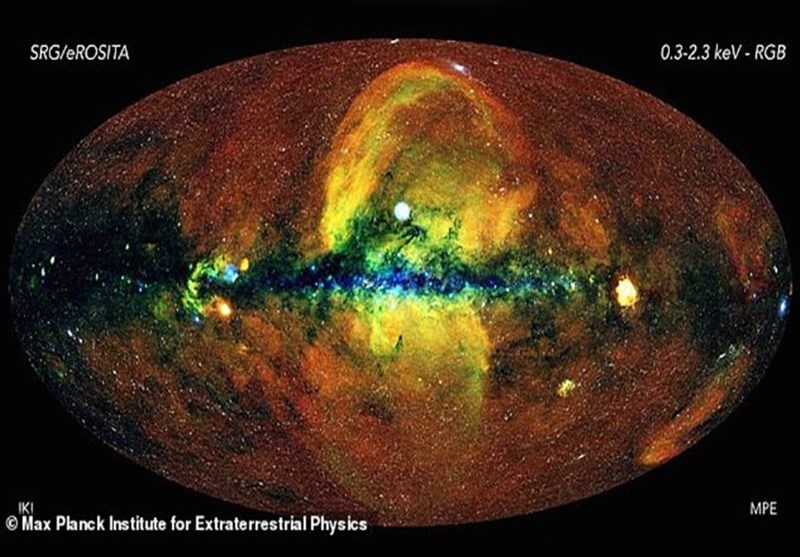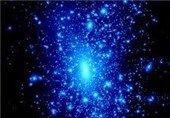X-Ray Telescope Reveals New Detailed Map of Universe
TEHRAN (Tasnim) – A galaxy hunting telescope has completed its first full sweep of the hot, energetic universe, resulting in a stunning map with more than one million cosmic objects.
The eROSITA X-ray Telescope has been scanning the sky for over 182 days and has discovered twice the number of known X-ray sources uncovered over the past 60 years, DailyMail reported.
The all-sky image highlights the exquisite detail structure of the hot gas in the Milky Way, stars with strong, magnetically active hot coronae, X-ray binary stars and black holes, along with spectacular supernova remnants.
The map is about four times deeper than the previous all-sky survey by the ROSAT telescope 30 years ago, and has produced around 10 times more sources.
The eROSITA was developed by astronomers from Germany and Russia, and went into operation just last year.
Peter Predehl, principal investigator of the X-ray telescope at Max Planck Institute (MPE) said in 2019: 'We built eROSITA to transform the way we see the X-ray sky, and to unravel the mysteries of cosmology and black holes.'
And now the technology has completed its deepest view of the X-ray sky.
'This all-sky image completely changes the way we look at the energetic universe,' Predehl said in a statement Friday.
Unlike other telescopes the eROSITA captures X-ray emissions from the hot and energetic universe, which is why these images look very different from most.
Clusters of galaxies appear as extended X-ray halos due to the hot gas confined by concentrations of dark matter.
The images highlight the stunning hot gas in the Milky Way and the circum-galactic medium that surrounds it – this is key to understanding how out galaxy formed.
The map also reveals stars with strong, magnetically active hot coronae, X-ray binary stars containing neutron stars, black holes or white dwarves, and spectacular supernova remnants in our own and other nearby galaxies such as the Magellanic clouds.
Mara Salvato, the scientist at MPE who leads the effort to combine eROSITA observations, said: 'We were all eagerly awaiting the first all-sky map from eROSITA.'
'Large sky areas have already been covered at many other wavelengths, and now we have the X-ray data to match. We need these other surveys to identify the X-ray sources and understand their nature.'
The survey is also a treasure trove of rare and exotic phenomena, including numerous types of transients and variables, such as flares from compact objects, merging neutron stars, and stars being swallowed by black holes.
'eROSITA often sees unexpected bursts of X-rays from the sky,' Salvato added.
'We need to alert ground-based telescopes immediately to understand what's producing them.'
The team received and processed about 165 gigabytes of data from the seven cameras attached to the telescope.
Rashid Sunyaev, Lead Scientist of the Russia, said: 'The astronomer are starting a second all-sky survey, which will be completed by the end of this year.'
'Overall, during the next 3.5 years, we plan to get seven maps similar to the one seen in this beautiful image. Their combined sensitivity will be a factor of five better and will be used by astrophysicists and cosmologists for decades.'
Kirpal Nandra, head of the high-energy astrophysics group at MPE, added: 'With a million sources in just six months, eROSITA has already revolutionized X-ray astronomy, but this is just a taste of what's to come.
'This combination of sky area and depth is transformational. We are already sampling a cosmological volume of the hot universe much larger than has been possible before. Over the next few years, we'll be able to probe even further, out to where the first giant cosmic structures and supermassive black holes were forming.'






